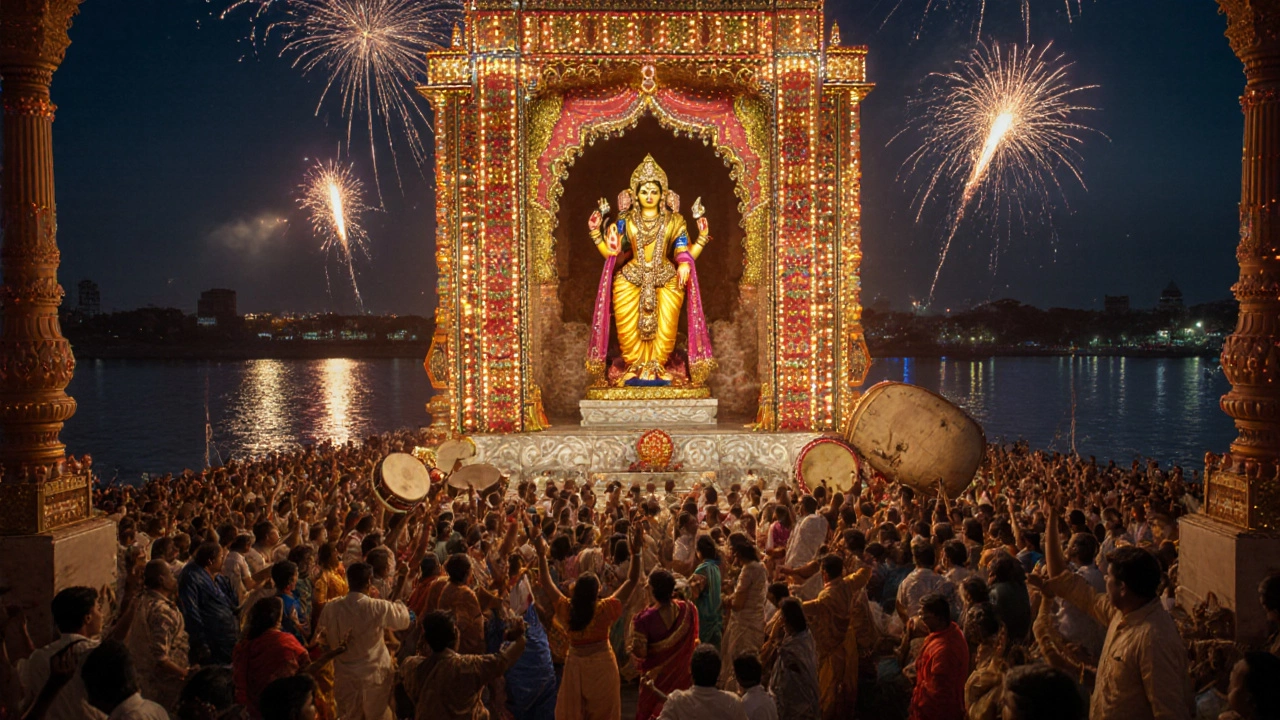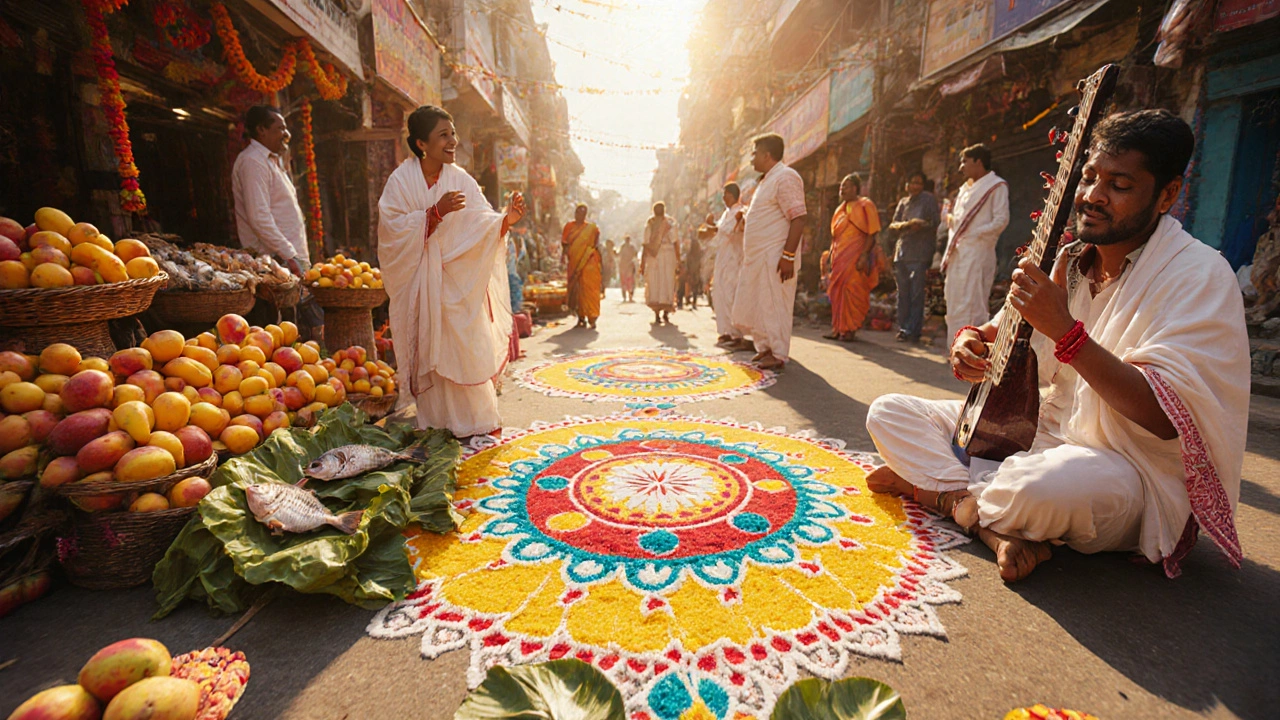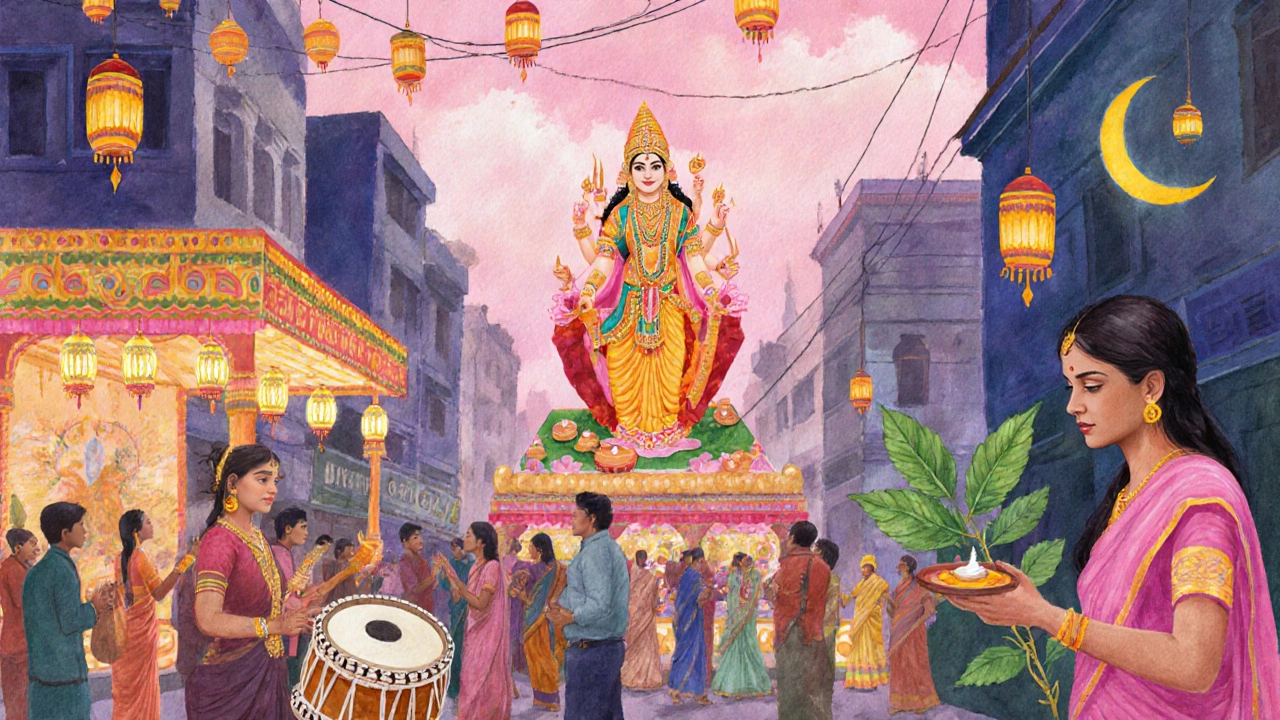Quick Summary
- Bengali festivals blend Hindu, Muslim and Christian traditions, reflecting centuries of cultural exchange.
- Durga Puja is the biggest celebration, drawing millions to Kolkata each year.
- Poila Boishakh marks the Bengali New Year with music, sweets, and new‑year greetings.
- Other key events include Saraswati Puja, Kali Puja, RathYatra, MakarSankranti and the major Islamic festivals.
- Visitors can join public pandals, street feasts, and community prayers to experience authentic Bengali hospitality.
When you hear the word “Bengali”, the mind often jumps to dazzling lanterns, rhythmic drumming and riverside feasts. That’s because Bengali people celebrate a rich calendar of festivals that weave together religion, seasons and local customs. From the thunderous drums of Durga Puja to the quiet verses recited on Poila Boishakh, each celebration tells a story about identity, community and the changing sky. Below you’ll find a practical guide that answers the main question - what do Bengali people celebrate? - and gives you enough detail to join in, whether you’re in Kolkata, Dhaka or a diaspora hub like London.
Bengali festivals are a set of religious, seasonal and cultural events observed by the Bengali‑speaking population of West Bengal, Bangladesh and global diaspora communities. They span Hindu, Muslim and Christian calendars, and many have become communal holidays celebrated by people of all faiths.
Durga Puja: The Grandest Celebration
Durga Puja is a nine‑day Hindu festival that honors the goddess Durga’s victory over the buffalo‑demon Mahishasura. The event peaks on the fifth day, called Maha Saptami, when elaborately crafted idols are installed in temporary structures called pandals. In Kolkata alone, the city hosts over 3,000 pandals, attracting roughly 5million visitors each year. The streets transform into a night‑time carnival: earthen pots of “panda” sweets line shop windows, artisans light up the sky with fireworks, and locals dress in silk sarees and dhotis to dance to the beats of dhak (large drums).
Key rituals include the "Shashthi" offering of flowers, "Anjali" (prayer) to the goddess, and the "Sindoor Khela" where married women apply vermilion on each other’s feet for marital bliss. The festival ends with "Vijaya Dashami", when the idols are immersed in the Hooghly River, symbolising the return of the goddess to her celestial abode.
Poila Boishakh: Bengali New Year
Poila Boishakh, celebrated on 14April, marks the first day of the Bengali calendar. Unlike most Indian New Year festivals that fall in March, Poila Boishakh aligns with the solar New Year and the onset of the harvest season. The day is ushered in with "Ha‑Lo‑Po Bhat", a special rice dish, and the traditional greeting “Shubho Noboborsho”. In urban centres, banks, schools and offices display colourful rangoli patterns and host cultural programmes featuring Rabindra Sangeet (songs of Rabindranath Tagore).
People also wear white chunri (a shawl) and a red thread for good luck, while markets burst with fresh mangoes, hilsa fish and sweets like "Mishti Doi". In the diaspora, community halls organise fairs where Bengali families showcase their cuisine, crafts and folk dances, keeping the New Year spirit alive far from home.
Saraswati Puja: Honouring the Goddess of Knowledge
Saraswati Puja occurs on the fifth day of the bright fortnight of Magha (January‑February). Students, teachers and artists set up a modest altar with a white lotus, a sitar or a paintbrush, and a copy of the Vedas or a textbook. The ritual asks for wisdom, creativity and the removal of ignorance.
In West Bengal, the tradition of placing a "Kalash" (water pot) filled with sugarcane and mango leaves in front of the idol is common, symbolising purity. Many schools close for the day, and families serve sweet dishes such as "Payesh" (rice pudding) before commencing the festive prayers.
Kali Puja: The Night of the Dark Mother
Kali Puja coincides with the pan‑Indian Diwali but emphasises the worship of Kali, the fierce aspect of the divine mother. Held on the new moon night of Kartik (October‑November), the festival lights up homes with oil lamps and rows of earthen earthenware lit by large diyas. In Kolkata’s historic neighbourhoods, pandals dedicated to Kali are lit with fire‑art installations and sound‑scapes that narrate mythic battles.
Devotees chant "Kali Ma Maha‑Shakti" and offer red hibiscus, sweets like "Khurma" and animal‑free prasad to the goddess. The celebratory atmosphere is a blend of solemn reverence and unbridled joy, highlighted by the "Raas" dance performed by men in traditional dhaks.

RathYatra: The Chariot Festival
Rath Yatra in Bengal falls in the month of Chaitra (March‑April). While the biggest RathYatra is in Puri, Odisha, the Bengali version centres on the deity Jagannath, his brother Balabhadra and sister Subhadra. A wooden chariot is drawn by volunteers through the streets of Shantipur and some other towns, accompanied by chants of “Hare Krishna”.
The event epitomises communal harmony: people from different castes and religions join the pulling of the chariot, sharing prasad (sweetened rice) and sweets offered at the shrine. The festive crowd often enjoys a fair with rides, musical performances, and stalls selling “Kathi Rolls” and “Misti Doi”.
Makar Sankranti (Poush Sankranti): Sun’s Northward Journey
Makar Sankranti, known locally as Poush Sankranti, marks the sun’s transition into Capricorn on 14January. The day is linked to harvest celebrations and the preparation of “Pitha” - a variety of rice‑based cakes. In rural Bengal, the festival is a time for families to gather, sing “Bengali Bajna” (folk songs), and exchange gifts of “PitheBhaat”.
Urban celebrations feature kite‑flying competitions, reflecting a pan‑Indian custom, but the Bengali twist is the “Maa Khod” ritual where women worship the mother‑earth for a bountiful crop. The festival ends with a communal feast of boiled vegetables, lentils and the sweet “Patishapta”.
Eid‑ul‑Fitr and Eid‑ul‑Adha: Muslim Celebrations in Bengal
Bangladesh and West Bengal host sizable Muslim populations, so Eid ul‑Fitr and Eid ul‑Adha are observed with equal enthusiasm. Eid‑ul‑Fitr follows Ramadan’s month‑long fast, and families gather for the “Salat‑ul‑Eid” prayer at local mosques or open fields. The day features “SheerPuli” (sweet milk), “Rasgulla” and “Hilsa” fish, illustrating the culinary blend of Bengali flavours.
Eid‑ul‑Adha, the Festival of Sacrifice, involves the ritual slaughter of a goat or cow, with meat distributed among the poor. In Bengal, it’s common to hear the call to prayer echoing over the Ganges while neighbours exchange “Mithai” (sweets) and colourful “Eid‑cards”.
Christmas: Joyful Celebrations Among Bengali Christians
Although a minority, Bengali Christians celebrate Christmas with a distinct spice. In Kolkata’s Park Street and Bagbazar, churches are adorned with mango‑leaf rangoli and “MistiPithe” is offered as festive delicacy. Midnight Mass is followed by a feast of roast chicken, “MishtiDoi”, and “GulabJamun”.
Holiday parades featuring choir performances of Bengali‑language carols create a unique cultural fusion, and street vendors sell “Papad Pitha”, a salty snack that is otherwise not associated with Christmas elsewhere.

Festival Overview at a Glance
| Festival | Typical Month (Gregorian) | Primary Theme | Main Activities |
|---|---|---|---|
| Durga Puja | September‑October | Victory of good over evil | Pandal visits, dhak drumming, idol immersion |
| Poila Boishakh | April 14 | New year, renewal | Rangoli, sweets, cultural shows |
| Saraswati Puja | January‑February | Knowledge & learning | Altar setup, book prayers, music |
| Kali Puja | October‑November | Divine mother’s power | Night lamps, hymns, fireworks |
| Rath Yatra | March‑April | Divine procession | Chariot pulling, folk songs, fairs |
| Makar Sankranti | January 14 | Solar transition, harvest | Kite‑flying, pitha making, community meals |
| Eid‑ul‑Fitr / Eid‑ul‑Adha | Varies (Islamic lunar calendar) | Gratitude & sacrifice | Prayer, feasting, charity |
| Christmas | December 25 | Joy & fellowship | Midnight Mass, sweets, choir performances |
How to Experience Bengali Festivals as a Visitor
- Choose a flagship event - Durga Puja in Kolkata offers the most immersive experience.
- Plan ahead: most pandals open at dusk; arriving early avoids crowds.
- Dress modestly and respect local customs - women often wear saree or salwar, men a kurta.
- Try traditional foods: “Misti Doi”, “Pitha”, “Hilsa” fish and “Rasgulla”.
- Participate in community prayers or cultural programmes; many organizers welcome foreigners.
- Use public transport - Kolkata’s metro and bus network are festival‑friendly.
Common Pitfalls and How to Avoid Them
- Assuming every Bengali festival is Hindu. The calendar is pluralistic; acknowledge Muslim and Christian celebrations too.
- Skipping the local etiquette of removing shoes before entering a temple or mosque.
- Leaving trash at pandal sites - most festivals have strict clean‑up rules.
- Under‑estimating crowd sizes - book accommodation well in advance during Durga Puja.
- Ignoring regional variations: the way Poila Boishakh is celebrated in Dhaka differs slightly from Kolkata.
Frequently Asked Questions
When does Durga Puja usually take place?
Durga Puja falls in the month of September‑October, right after the monsoon, and the exact dates shift each year based on the lunar Hindu calendar.
What are the essential foods to try during Poila Boishakh?
Look for "Mishti Doi" (sweet yogurt), "Roshgolla", "Panta Bhat" (fermented rice) and fresh mangoes. Street stalls also serve "Alur Torkari" (potato curry) and "Macher Jhol" (fish stew).
Do non‑Bengali visitors need to participate in the rituals?
No, but showing respect by removing shoes, staying silent during prayers, and offering a small donation is appreciated. Most pandals welcome observers.
How are Islamic festivals integrated into Bengali culture?
Eid‑ul‑Fitr and Eid‑ul‑Adha are celebrated with communal prayers, special sweets like "Sheer Puli" and generous sharing of meat. In many Bengali towns, Muslim and Hindu neighbours exchange greetings and food.
Is there a difference between Bengali New Year in Bangladesh and West Bengal?
Both mark 14April, but Bangladesh often incorporates more folk music like "Baul" songs, while West Bengal emphasizes cultural programs organized by schools and municipal bodies.
